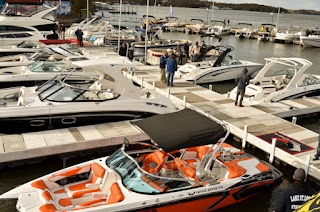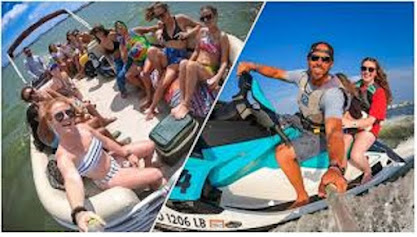Engine Cut Off Switch. Use them ?
Each year the Coast Guard receives reports of recreational vessel operators who fall or are suddenly and unexpectedly thrown out of their boat. These events have led to injuries and deaths.
During these incidents the boat continues to operate with no one in control of the vessel, leaving the operator stranded in the water as the boat continues on course, or the boat begins to circle the person in the water eventually striking them, often with the propeller.
These dangerous runaway vessel situations put the ejected operator, other users of the waterway, and marine law enforcement officers and other first responders in serious danger.
Operators of recreational vessels less than 26 feet in length will be required to use an engine cut-off switch (ECOS) and associated ECOS link (ECOSL) as of April 1, 2021, as the U.S. Coast Guard implements a law passed by Congress.
The ECOS and ECOSL prevent runaway vessels and the threats they pose. The ECOSL attaches the vessel operator to a switch that shuts off the engine if the operator is displaced from the helm. The ECOSL is usually a lanyard style cord that attaches to an ECOS either in close proximity to the helm or on the outboard motor itself if the vessel is operated by a tiller. When enough tension is applied, the ECOSL disengages from the ECOS and the motor is automatically shut down.
Wireless ECOS have recently been developed and are also approved for use. These devices use an electronic “fob” that is carried by the operator and senses when it is submerged in water, activating the ECOS and turning the engine off. Wireless devices are available on the aftermarket and are beginning to become available as manufacturer-installed options.
The Coast Guard believes that the overwhelming majority of recreational vessels produced for decades have had an ECOS installed, so this new use requirement simply obligates recreational vessel operators to use critical safety equipment already present on their boat.
Seven states currently have ECOS use laws for traditional recreational vessels, and 44 states have ECOS use laws for personal watercraft (PWC).
Operating below the water line, the propeller is not readily visible to the operator, passengers, swimmers, skiers, etc. Common propeller strike events include “crew-overboard” and/or “circle of death” incidents. If you have a “crew overboard” event, you should immediately turn toward the person in the water in order to push the stern in the opposite direction. Simultaneously, you should shift to neutral to stop the propeller from spinning.
A “circle of death” event occurs when the operator goes overboard and/or loses control of the steering. Whether you have an outboard or inboard engine, more likely than not your propeller is designed to spin in a clockwise manner. This built in prop pitch introduces “prop walk”, which, depending on the amount of throttle still applied when steering is lost will cause the boat to circle. This circling action has the potential of creating a scenario where the operator, now in the water, is actually run over by the boat and potentially hit by the propeller.
To minimize the potential of someone being struck by the propeller use the following cautions:
- Make sure everyone on board is seated properly before starting the engine.
- Never run the engine while people are boarding or unboarding.
- Do not allow passengers to stand, sit on the transom, gunwales, seatbacks or bow while underway.
- Do not operate within close proximity to people in the water. This includes swimmers, skiers, divers, etc.
- Keep a sharp lookout.



Comments
Post a Comment